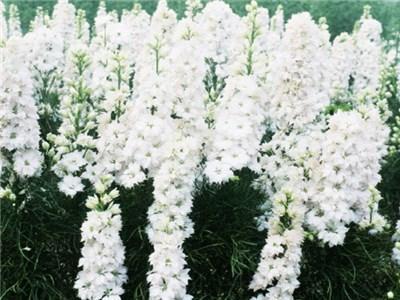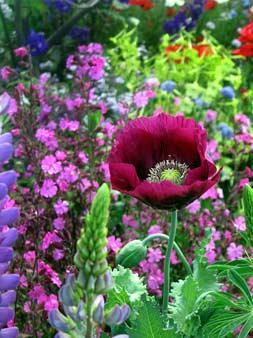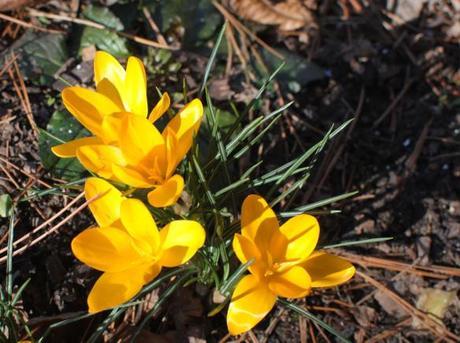Yesterday I planted seeds of Papaver somniferum (Hungarian blue breadseed) and Papaver ‘Lauren’s Grape,’ as well as larkspur (Delphinium ajacis) ‘Apple Blossom’ and ‘Pink Queen.’ The breadseed poppy is perennial, but the others are annuals.

Larkspur ‘Apple Blossom’ (Delphinium ajacis ‘Apple Blossom’). Photo by Baker Creek Heirloom Seeds.

Papaver ‘Lauren’s Grape.’ Photo by Annie’s Annuals.
I plan to include more self-seeding annuals in my garden this year, though I’m afraid it’s late to be planting poppies in Zone 7b. Perhaps they’ll get a decent zap of cold in February and take hold by early summer. I’ve never had much luck with poppies, but last fall a friend shared her planting technique with me and so far, things seem to be working:
How to Plant Ornamental Poppies
- Spread a layer of compost 1-2 inches deep over the area where you wish to plant. Smooth the compost with the back of a rake.
- Scatter the seeds over the compost.
- Use the head of the rake to tamp the seeds gently but firmly into the compost.
- Leave them alone. Don’t water; don’t cover.
The seeds are tiny and need light to germinate. In the past, I didn’t plant them in compost, or sometimes I’d forget where I planted them and would mulch them over with shredded leaves. The ones I planted in November have germinated and their cotyledons hover just above the compost. They’re quite tough, having survived heavy rain and some wild temperature fluctuations so far.
I also, against good advice, transplanted some crocuses just before they burst into bloom. Crocuses are tough; they’ll get over it. Some tasks you just have to tackle when you have the time.

The garden could easily be mistaken for a mud-wrestling pit these days, thanks to frequent rains and plagues of squirrels that dig up my unfrozen ground to hide their found treasures. I wonder why the squirrels haven’t dug up the poppy seedlings (yet?).

